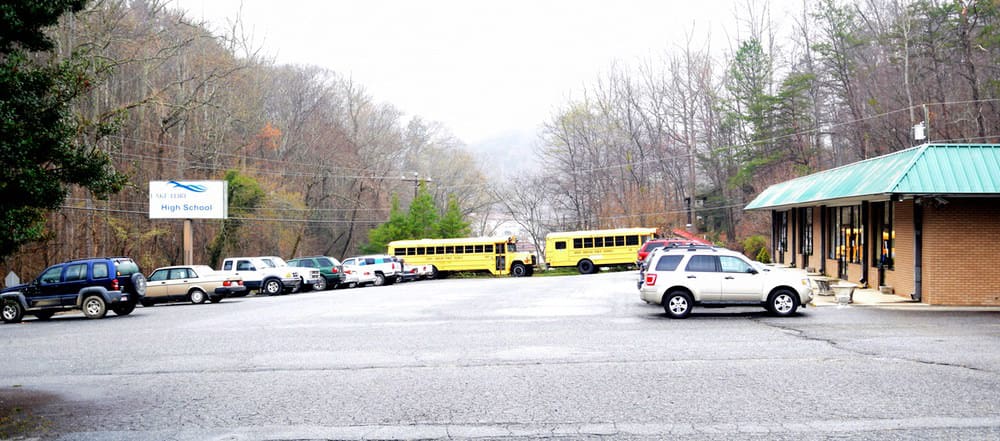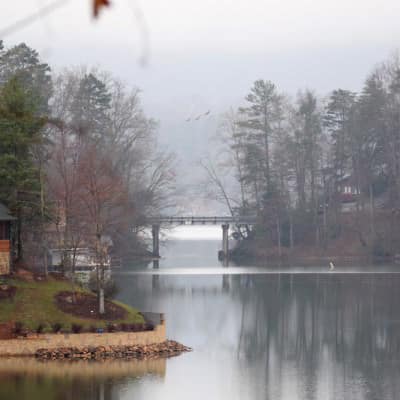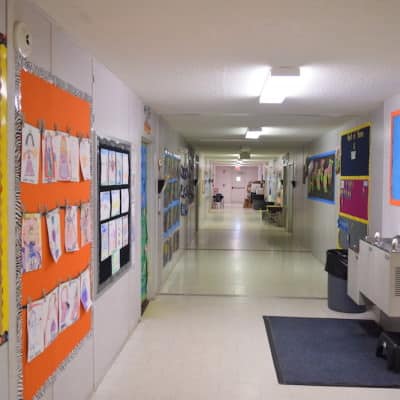

It was 4½ hours from Raleigh to Lake Lure – 30 minutes longer than Google thought it would be. These are slow roads – not because of the speed limit or the rain, but because on any given day logging trucks, wide loads, and/or farm equipment back up cars and school buses for as far as the eye can see.


As I drove and drove and drove and drove, I remembered that our state is beautiful, much of it is poor, and it is filled with nooks and crannies. And in those nooks and crannies live children. And all of those children enjoy our state’s constitutional right to a sound, basic education.


One of the reasons we have charter schools in North Carolina is for communities that are bound by place, for communities that don’t have a public school.
This is a land of covered bridges and islands in the lake all shrouded in mist and drizzle this time of year. Lots are littered with pontoon boats waiting for warmer weather.
The Lake Lure Development Company built a school in Lake Lure in 1927 and gave it to the Rutherford County School System. Thirty-four years later, “[w]ith little growth and the trend to consolidate schools, the county closed the Lake Lure school in 1961,” according to Jim Proctor’s book on Lake Lure.1 By all accounts I have read or heard, closing the school changed the community.2
The closest traditional public elementary, middle, or high school to Lake Lure is 30 minutes away – 1 hour roundtrip. Parents didn’t like the drive and didn’t like having their kids on school buses for that long either. On some days because of those slow roads the ride could take much longer.
And so on the site of the old Lake Lure School in temporary trailers, a charter school opened in 2010 – the Lake Lure Classical Academy – currently serving students in grades K-11, and adding a grade each year.
This old school used to sit just up these steps.




The lake defines this community and this school, tying together the past, present, and future.


If the principal is the heart of this school, then the community seems to want the school to be the heart of the community.


To build this school, they had to bring in fill dirt to raise the elevation so that there would be room for the 11 buses that line the driveway on street level.


Charter schools don’t always provide buses, and the first year it was in operation, LLCA relied on carpools. But for communities bound by place something has to give. Though intended to serve the families in Lake Lure, to make the economics of a charter school work, the school now pulls students from five counties – Rutherford, Polk, Henderson, Buncombe, and McDowell. The drive to the charter school was too tough for many parents so used public school buses were purchased to run six routes. 63 percent of the students ride the bus at a cost of $120,000 a year.
There are three large trailers up on the hill – grades K-2, grades 3-5, and then specials and grades 6-8 share a trailer. The Town Plaza building two doors down from the school is used for the high school.




Usually there is something totally unexpected when I visit a school. This time? A beloved rose haired tarantula in the elementary school.




In the music classroom, Vivaldi’s Four Seasons is playing. The teacher, Tammy Staley, is composing music at her desk. She drives 45 miles from her home in Spartanburg to teach K-5 music, joking that as she trains the next generation of contestants for American Idol, she’s just hoping for a shout out someday.
In the drama and art classroom, bins of costumes fill a corner. The school uses the Mill Spring Ag Center, an old elementary school, in Polk County 20 minutes away for performances. The auditorium doesn’t have heating or air conditioning, but it does have electricity. In case you are nearby and want to check it out, a performance of Shrek is scheduled for May 15-16.


These trailers provide a school in Lake Lure, but they don’t serve as the community hub that is needed and wanted.
And so on September 30, 2014, some 370 students rode on the buses to 34 acres of land near the intersection of Highway 9 and Island Creek Road. The land is a grant from the Town of Lake Lure, and the students joined with more than 100 community stakeholders to break ground on a $9 million, almost 50,000 square feet school including 37 classrooms. An additional $2.8 million is being raised for a gym, an auditorium, and an art center. The school will accommodate more than 650 students.
In July 2013, the population of the town of Lake Lure was 1,210.
A robust sports program is in the works including baseball, basketball, football, soccer, softball, cheerleading, swimming, volleyball, and wrestling. Track, lacrosse, and archery are on a list I stumble upon for the future.


If students leave, the school finds out why. Former school leadership, more rigor, less rigor, more nurturing, travel time, and the need for a newer, better school facility have all been listed in exit interviews. Each student matters for a community charter school like this one to thrive. Each student, each family becomes a priority.
So a town that craved a school of its own is now building a school that will serve a broader community, the region. As principal Jessica Boland says,
“I believe for the school to be successful, not only does the school need to provide outstanding academics, but it needs to be connected with the surrounding community. People often coin the phrase ‘it takes a village’ to raise a child but the same holds true for a school.”




















